The white cane is one of many mobility aids used by people of all ages who are blind or have low vision. They can assist with safety, mobility, balance and independence.
Canes can come in various types to support people with different kinds and degrees of vision loss.
If you are new to the world of white canes, it is essential that you be assessed by an Orientation & Mobility Specialist, who will recommend a cane that best suits your needs.
Three main types of canes:
Long Mobility Cane
Enables a person who is blind or has low vision to use the cane to preview or detect obstacles and hazards within their path of travel such as curbs, steps, uneven ground and other changes in ground surfaces.
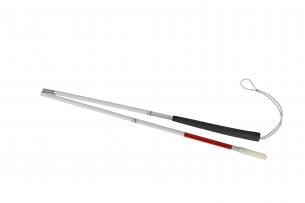
Identification Cane
This cane is designed to be a visible signal to others that the user is blind or has low vision. People do not use identification canes to detect obstacles, but it can be used to assist with detecting the height of steps, gutters and down drops and offer some lower body protection.
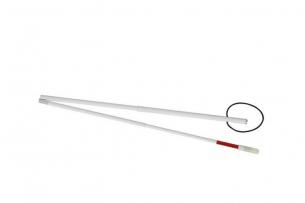
Support Cane
Is used to aid balance and as a means of physical support for a person who is blind or has low vision. Like the identification cane, this cane is not used to preview or detect obstacles in the path of travel, but to broaden the user’s base of support and improve their balance.
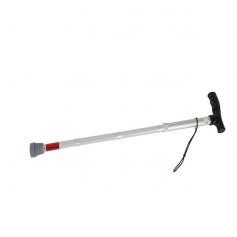
See how Ben switches between his two canes:
Customize
Colours:
While the International colour (symbol) is white, canes come in a variety of colours and patterns. There are even rainbow coloured canes! Speak to our friendly staff at Vision Store to find out more information.
Cane tips
Different tips are available for white canes to help people navigate different surfaces and environments. Below are some examples of the most commonly used cane tips:
Ballrace overfit (small revolving or Marshmallow tip):
Pros: Rolls across walking surfaces and small cracks smoothly, especially good on smooth surfaces indoors.
Cons: The tip occasionally may snag on cracks and rough surfaces
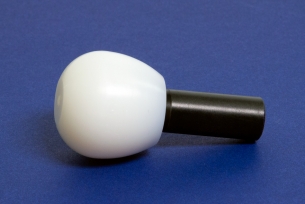
Supa Ball Rotating:
Pros: Rolls over cracks and uneven surfaces in the footpath, making for a smoother walk.
Cons: Larger tip may not provide as much feedback about small changes in the terrain.
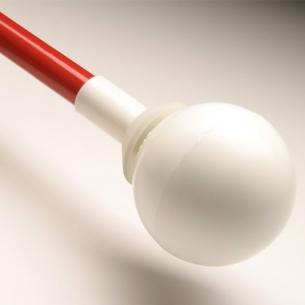
Assessment and Training:
If you are unsure which white cane you should be using, book an appointment with our Orientation and Mobility Specialists. They will assess and prescribe the correct cane that best meets your needs. Our Orientation and Mobility Specialists are also available to provide training and support on how to use your cane or mobility aid.
For an assessment, training or advice, please call Vision Australia on 1300 84 74 66 or fill out this online form.
Using a white cane: detecting obstacles and walking safely
Options:
For some people who are blind or have low vision, their white cane might be their primary or sole mobility aid, while others may use it in conjunction with other strategies.
Many Seeing Eye Dog handlers will keep a white cane handy for when it might not be convenient to have their dog accompany them, for example when walking around their workplace or another area they are familiar with.
Some people may also use an electronic mobility aid like the Sunu Band or Miniguide in conjunction with their white cane. These electronic mobility aids use sonar with information provided through tactile vibrations to alert the user of obstacles in their travel path including providing upper body protection, as well as locating landmarks and features they would like to find. Some people use electronic Long Canes, such as the UltraCane and WeWalk Smartcane.
Again, it’s important to get the right advice.
Funding:
You may be eligible for government assistance or funding to purchase your cane. If you have an National Disability Insurance Scheme (NDIS) or My Aged Care package, canes are considered assistive equipment and can be funded in most circumstances. Or if you are a Department of Veterans’ Affairs’ (DVA) Gold Card Holder, mobility aids can be funded by DVA.
NDIS recipients can purchase replacement canes through their consumables budget
If you’d like more information on the funding options, talk to Vision Australia
Browse the types of canes available:
Need some advice? Call 1300 84 74 66 and ask to be connected to your nearest shop.










